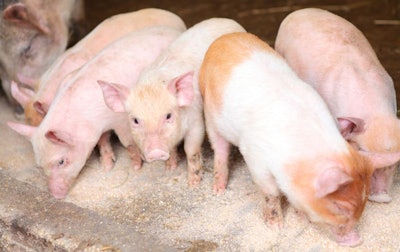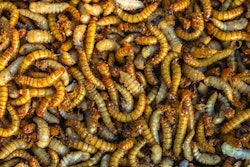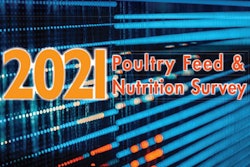
In June 2022, the pharmacological use of zinc oxide in piglet feeds will be banned in the EU.
Zinc oxide used at pharmacological doses of up to 3,000 ppm zinc will be banned in all EU states as of June 2022, although many EU states have already implemented the ban.
This ban comes after a rather long history of partial restrictions and confusing regulations that aimed to reduce the use of zinc in animal feeds and, in particular, zinc in piglet feeds. Zinc is a heavy metal and it is considered an environmental hazard as it can contribute to soil deterioration.
Piglet feeds will be particularly affected by this ban because supplementation with zinc oxide at such high levels has been practiced from the late 1980s on a global scale. Zinc oxide exerts a beneficial effect on gut microbiota, leading to reduced diarrhea problems and/or to enhanced growth performance. This effect is in addition to that of in-feed antibiotics (also banned in the EU since 2006) and parallel to that of copper sulfate (another gut health agent).
The mode of action of zinc oxide remains unclear. Many theories and ideas have been proposed, and it is likely zinc oxide has more than one mode of action. Most authorities agree that zinc oxide controls and suppresses the growth of pathogenic bacteria in the hind gut, enabling the establishment of a healthy microbiota. Any similar dietary intervention should help the transition to zinc oxide-free diets.
Here, it is important to note that zinc from zinc oxide and other zinc sources will continue to be used at nutritional levels (up to 150 ppm) in piglet feeds. It is the pharmacological use of zinc that is being curtailed by the impeding ban. To replace its pharmacological properties, the following are offered for consideration:
Balanced protein concentration
Feeds that contain excess protein invariably benefit the proliferation of pathogenic microbiota. Escherichia coli, for example, thrives on protein, whereas beneficial lacto-bacteria require readily available fibers. Reducing total protein (amino acids) levels is counterproductive because it will reduce animal growth. In contrast, reducing crude protein concentration and using higher levels of feed-grade amino acids enables the formulation of a balanced diet that feeds the animal and not the bugs in the gut.
Maximal nutrient digestibility
It follows from the above that anything that reaches the large intestine will be used for feeding the microbiota living there. It is then up to the formulator to ensure that only desirable non-digestible ingredients reach the large intestine. To this end, using highly digestible ingredients will reduce the amount of non-digested nutrients.
Ideal fiber profile
Not all fibers behave the same. For example, hemicelluloses increase gut viscocity, reduce nutrient digestibility, and promote pathogenic bacteria growth. In contrast, lignocellulose has none of these problems and reduces upper gut leakage. Other, non-viscous fibers can be used to promote healthy microbiota growth. The ideal balance between insoluble and fermentable fibers is the matter of investigation.
Least possible feed antigens and ANF
Antigens and antinutritional factors (ANF) invariably damage the gut and burden its digestive process. A damaged gut is the ideal situation for opportunistic pathogenic bacteria to proliferate. Using ingredients that have the least amounts of antigens and anti-nutritional factors is one of the ways that can reduce this burden. Naturally, feed cost will be higher, but treating piglets for diarrhea is also a costly exercise.
Other zinc forms
Alternative zinc sources for piglet feeds include products such as potentiated zinc oxide, organic zinc, tetra-basic zinc chloride, encapsulated zinc oxide, nano-zinc oxide and zinc sulphate. Not all of them work with the same efficacy, but at least some offer a partial solution to replacing zinc oxide.
Gut health additives
All the additives used in replacing in-feed antibiotics can also be used to replace zinc oxide. The list of such additives is exhaustive. Such products can be divided into three broad categories as follows:
- Additives that eliminate bacteria: examples include organic acids, phytogenics, medium-chain fatty acids, sources of immunoglobulins, copper sulfate, etc.
- Additives that promote beneficial bacteria: examples include probiotics, prebiotics and functional fibers, nucleotides, dead yeasts, etc.
- Additives that enhance overall immunity: examples include omega-3 fatty acids, beta-glucans, certain phytogenics, yeasts, antioxidants, etc.
The least amount of research has been dedicated to the role of zinc oxide as an agent that promotes greater microbial diversity. It is well known that an animal will be overall healthier if its microbiota is not dominated by any single species of bacteria. Zinc oxide has been shown to do exactly that, but most research has focused on its potential to eliminate bacteria.
A recent study indicated that it is possible to increase microbiota diversity even without zinc oxide. It is interesting that not only is diversity increased within each piglet, but inter-animal variability was reduced, indicating a healthier overall population. This was the result of feeding live yeast, an additive that has more roles than recognized.
There are plenty of products that can replace zinc oxide. It is important, however, to understand what function of zinc oxide we are replacing, because it has been shown that zinc oxide is an additive with many and diverse modes of actions.














